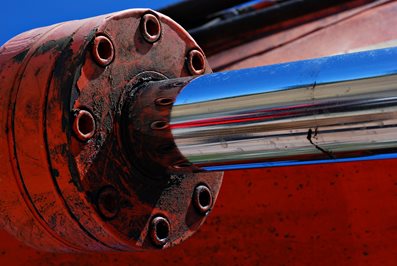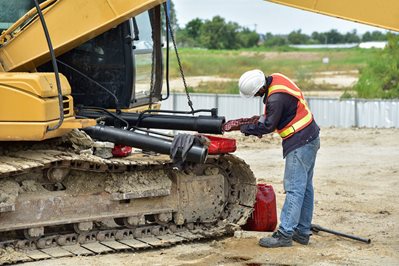The Top 5 Hydraulic Cylinder Repair Tips
Hydraulic cylinders are an essential part of numerous types of hydraulic systems. They convert fluid energy into mechanical energy to perform work, such as lifting heavy objects.

Hydraulic cylinders are also used to pull, push, or press objects together. For example, the brakes on your vehicle rely on hydraulic cylinders to engage the brake pads and bring the vehicle to a complete stop.
Just like the other parts and components found in hydraulic systems, hydraulic cylinders require preventative and corrective maintenance. Fortunately, repairing or replacing a hydraulic cylinder is one of the easier mechanical tasks to perform, by using these top tips on how to repair a hydraulic cylinder.
Tip #1. Do a complete inspection of the hydraulic cylinder.
You need to inspect the seals, hoses, fittings, rods, and other components that are essential for the cylinder’s operation before starting the repair process. Sometimes the root cause of failures is not the cylinder and could be as simple as a leaking hose.
Tip #2. Make sure you have the right tools.
You will need specific tools to remove the cylinder rod from the cylinder tube and make the necessary repairs. Typical tools required are wrenches, circlip pliers, screwdrivers, an emery cloth, etc. The tools you need will depend on whether you need to service a wire ring cylinder or a threaded head cylinder.
You do not want to start any repairs if you lack any essential tools. Using the wrong tools could lead to metal-to-metal contact with the surface of the cylinder bore, scratching, bending, or other such problems.
Tip #3. Make sure you have the right parts and components.
Once you ascertain the root cause of the problem, you need to ensure you have all the parts and components to complete the repair. Different types of cylinders can require additional parts.
Regardless of the repair, you will need O-rings and other types of seals because you need to do a complete rod seal replacement anytime you disassemble the cylinder housing and remove the cylinder rod.
Tip #4. Remember to install new wear bands.
Just like with different piston seals, you need to install new gland seals. The gland seals prevent oil from leaking out of the end of the cylinder and also prevent the cylinder rod from making metal-on-metal contact between the rod and the inside of the gland.
Tip #5. Pay attention to the rod assembly as you take it apart.
It can be beneficial to take pictures of the rod assembly to ensure you place piston seals, high tension springs, if used, and other such parts back into their exact location. Installing them in the wrong places can make it difficult to reassemble and will mean that the assembly will not work as originally designed.
Furthermore, improper reassembly of the cylinder could lead to problems like corrosion since it will not be sealed properly. The last thing you want is for moisture to get inside the cylinder, as it can rust the bore, damaging the seals and causing further leakage.
Tip #6. Inspect cylinder parts and components while it is disassembled.
You want to verify the cylinder rod is not bent or scratched. If this is the case, it indicates a bigger problem that will also need to be fixed.
Take the time to also check the rod seals to see if they are misformed, as this could indicate the rod is bent. Additionally, check the inside of the cylinder bore for rust, pitting, scoring, or scratches, as these will cause leaks.
Tip #7: Determine what went wrong with the cylinder.
Simply repairing the cylinder may not resolve the underlying problems. When repairing the cylinder, you need to determine what caused the damage in the first place. By taking the time to identify what went wrong, you can avoid having to make the repair repeatedly.
Tip #8. Keep a stock of cylinder repair parts and components on hand.

It is a good idea to have the replacement parts and components you need to repair cylinder rods, piston and gland seals, etc. This way, when something does need to be repaired or replaced, your downtime will be shorter than having to order parts and wait for them to arrive.
Tip #9. Always prepare the cylinder for repair.
Before you start disconnecting hoses and fittings and removing the cylinder, take the time to clean the area. Doing this will prevent dust, dirt, grease, and dirty oil from getting into the cylinder unit and the hydraulic system.
White House Products, Ltd. Has the Parts You Need
By using these tips on how to repair a hydraulic cylinder, the repair process will be much easier. For all your hydraulic cylinder parts, components, seal kits, replacement rods, hoses, and more, please feel free to contact White House Products, Ltd. at +44 (0) 1475 742500 today!
Back to blog posts